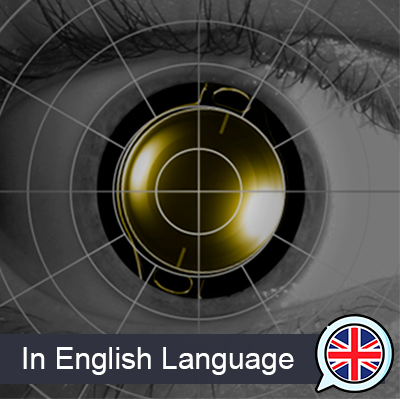Analysis of Results with Intraocular Lenses and Refractive Surgery
€49.99 3 Sections 31 Lessons
Course Description
-
Mode: Online Course
- Format: Rapid Learning Lessons
- Total Duration: 5 hours estimated (This course is now in development stage)
- Dates: No start or end date, follow the course at your own pace.
- Doubt Resolution: About the course content through the Questions or Answers section or Email.
- Level: From Basic to Advanced
- Evaluation: On-demand content without evaluations or exams.
- Certificate: Our goal is to help 21st Century professionals be more efficient and productive. We do not provide a paper that says you have taken the course, the value lies in demonstrating what you have learned.
Course Content
1.- INTRODUCTION TO ASTIGMATISM AND VECTOR ANALYSIS
In this section, you will learn about the "Refractive Analysis Toolbox and Vectorial Analysis". We will start with the download and installation of the Refractive Analysis Toolbox, a key tool for refractive analysis. Then, we will explore the structure and functioning of a toric intraocular lens and how it compensates corneal astigmatism. We will continue with an introduction to Vectorial Analysis and Single and Double Angle Plots, followed by an interpretation of these plots using examples from scientific literature. Finally, you will learn how to perform vector calculations using the graphical method in astigmatism analysis.
1.1.- What is a toric intraocular lens like and how does it compensate for corneal astigmatism?
1.2.- Introduction to vector analysis and single and double angle plots
1.3.- Interpretation of graphs with examples from the scientific literature
1.4.- Vector calculation using the graphical method in astigmatism analysis
1.4.1.- (RAT) Vector Addition and Subtraction Operations with "vectorAdd" and "vectorDiff".
2.- ANALYSIS OF ASTIGMATISM USING THE ALPINS METHOD
2.1.- Standardized Alpins' terminology for standard vector analysis
2.2.- Description of TIA, SIA and Angle Error Terms
2.2.1.- (RAT) Transposing Refractions with "transRx" to work in a standardized manner with Positive Cylinder
2.2.2.- (RAT) Convert Preoperative Measured Astigmatism to TIA with "pre2TIA".
2.3.- Statistical error when including both eyes and Magnitude of Error
2.3.1.- (RAT) Flipping of astigmatism data to avoid errors in mixing right and left eyes
2.4.- Golfer's analogy to explain SIA, TIA and DV
2.5.- Algorithm to understand Alpins analysis of astigmatism
2.6.- Example SIA in Clear Corneal Incision with Graphical Method and Descriptive Statistics
2.6.1.- (RAT) Decomposition of Astigmatism into its Cartesian Components with "vect2comp"
2.6.2.- (RAT) Astigmatism Recomposition in Polar coordinates with "comp2vect".
2.7.- Treatment to Reapply to correct Residual or Vector Difference
2.8.- Nomogram Considerations and Correction Limitations on the TIA
2.9.- Flattening effect and Torque, flattening and torsion effects on target vector
2.9.1.- (RAT) Calculation of the flattening effect on the curved meridian with "flatteningE".
2.9.2.- (RAT) Calculation of the force that could vary the meridian of the TIA with "torqueE".
3.- STANDARDS OF REPORTING OUTCOMES FOR MAIN END-POINTS
3.0.- Glosary of Standardized Abbreviations
3.1.- Evolution of Standards in Refractive and Cataract Surgery
3.2.- Laser Refractive and Cataract Surgery Safety Report
3.2.1.- (RAT) Visual Acuity Notation Conversions (Decimal, logMAR, Snellen)
3.2.2.- (RAT) Safety and Efficacy Plots for Laser, Cataract and Refracive Lens Surgery with "differenceVA".
3.3.- Efficacy in Clear Lens Refractive Surgery Procedures
3.4.- Efficacy of Cataract Surgery Procedures with and without Depth-of-Field Increase
3.5.- Predictability and Nomogram Fitting in Laser Refractive Surgery
3.6.- Predictability of the Spherical-Equivalent Relative to the Target
3.7.- Stability Assessment and Reporting
